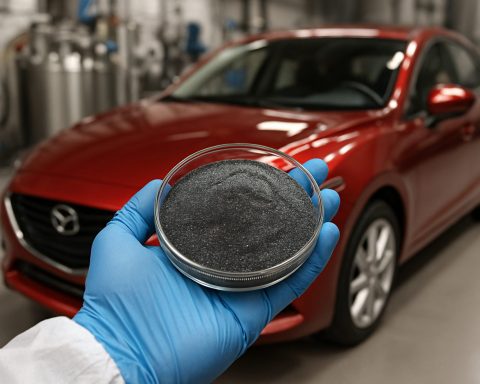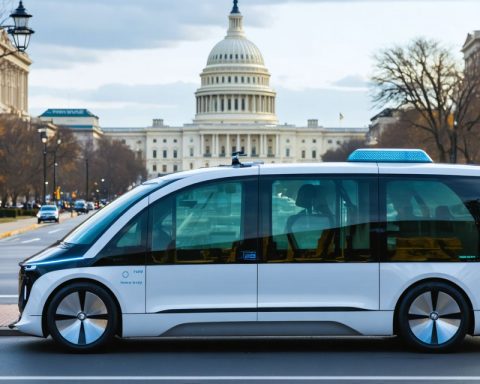- Waymo’s autonomous vehicles, operating in San Francisco, face challenges with urban unpredictabilities, receiving 589 parking tickets and fines of nearly $65,000 in a year.
- Despite advanced AI and sensors, the vehicles struggle with parking regulations and temporary changes like construction zones.
- The situation highlights the complexity of integrating autonomous technology with existing city infrastructures.
- This serves as a broader lesson for autonomous vehicle developers on adapting advanced technology to real-world dynamics.
- The experience is part of the ongoing learning process, emphasizing the need for societal adjustments in policies and infrastructure to support autonomous vehicles.
- The journey toward an autonomous future involves balancing technological advancement with understanding urban environments.
Amidst the bustling streets of San Francisco, a peculiar sight unfolds almost every day. Waymo’s fleet of sleek, driverless cars glides through the urban landscape with the promise of a futuristic, autonomous world. But even tech-savvy machines find themselves ensnared by the gritty realities of city life.
Over the span of a year, these state-of-the-art robotaxis have amassed a staggering 589 parking tickets, totaling almost $65,000. This unexpected pitfall highlights a fundamental challenge in the quest for automotive autonomy: the unpredictability of human environments.
Concrete and Code: A Complex Ballet
Waymo’s cars, celebrated for their laser precision and outstanding AI, are designed to navigate a city’s hustle without human intervention. Yet, despite their sophisticated sensors and maps, these robotic chauffeurs have been tripped up by the very laws meant to manage urban chaos—parking regulations. The fines pile up as a testament not only to unforeseen obstacles but to the complexity of integrating autonomous tech into existing infrastructures.
Picture a typical day: Waymo vehicles deftly maneuver around traffic, expertly anticipating pedestrians. Yet, when it comes to deciphering the complexities of parking, they’ve met their match. They can’t swiftly adjust to temporary changes like construction zones or special event warnings as human drivers would. Despite their programmed aim to follow rules to the letter, their efficiency becomes a burden in a city where regulations shift on a whim.
Innovation Meets Reality
The situation underscores a broader reality faced by many players in the autonomous vehicle space. While technology may advance at a breakneck pace, adapting it to daily realities remains a significant challenge. Every parking violation these robotaxis incur serves as a reminder of the dissonance between digital calculations and physical environments.
Waymo’s ongoing experiment is emblematic of the broader drive towards automation that’s sweeping across industries. The company’s determination to perfect this technology involves learning at every step, even from missteps. It showcases the unpredictable dance between innovation and adaptation, a process where every ticket is not just a fine, but a feedback loop.
The Road Ahead
As these robotic explorers continue to refine their operations, they are also paving the way for broader societal adjustments. Policies and infrastructures will need to evolve to embrace autonomous vehicles seamlessly. But perhaps the most significant takeaway is recognizing that the path to an autonomous future is as much about technology as it is about learning from and adapting to the nuanced rhythms of life in the concrete jungle.
In the relentless march toward a driverless future, it’s clear that even robots occasionally need a helping hand from human insight. And in this evolving narrative of man and machine, it’s a nudge to remember that innovation is not just about technology—but about listening to the cadence of the cities we inhabit.
Autonomous Vehicles and City Life: Diverging Paths and Future Solutions
Introduction
In the ever-evolving streets of San Francisco, the sight of Waymo’s driverless cars navigating through the urban sprawl represents a peek into a futuristic world of autonomous travel. Yet, despite their cutting-edge capabilities, these vehicles face real-world challenges – notably the 589 parking tickets totaling nearly $65,000 over a single year, showcasing the intricate dance between high-tech innovation and the unpredictability of human environments.
Why Autonomous Vehicles Struggle with Parking
Waymo’s autonomous vehicles are equipped with advanced technologies such as LIDAR, radar, and camera systems to perceive their surroundings meticulously. However, they struggle to interpret and adapt to the fluid and often ambiguous nature of urban parking situations. Here’s why:
1. Dynamic Changes: City environments are dynamic, with temporary changes like construction sites, events, and roadwork that challenge static data. Human drivers intuitively adjust to these changes, while autonomous systems may not.
2. Ambiguous Signage: Parking regulations and signage can be complex or unclear, making it difficult for autonomous systems, which rely on pre-programmed data, to detect and comprehend real-time restrictions accurately.
3. Lack of Human Judgment: Unlike human drivers, autonomous vehicles lack the innate ability to make judgment calls, such as interpreting unclear signage or discerning between legal and illegal parking during permissible times.
How to Improve Autonomous Parking Abilities
To address these challenges, companies like Waymo need to adapt and innovate further:
1. Real-Time Data Integration: Leveraging real-time data integration can help AVs react to sudden changes, like temporary no-parking zones, by updating their internal maps accordingly.
2. Enhanced AI Learning: Continual improvement of AI algorithms will help vehicles better interpret ambiguous parking scenarios, reducing reliance on rigid rule-observance.
3. Collaboration with City Planners: Working closely with urban planners can lead to clearer regulations and more universally understandable signage that caters to both humans and machines.
The Future of Autonomous Vehicles
As the autonomous vehicle industry progresses, key trends are emerging:
1. Expansion of Fleet Testing: Companies are expanding their fleets in more cities to gather diversified data, which will help tackle unique geographic and regulatory challenges.
2. Increased Regulation and Infrastructure Development: Governments are preparing for more widespread use of AVs, with regulations and infrastructure developments being tailored to support autonomous driving.
3. Enhanced Vehicle-to-Infrastructure Communication: Advanced communication systems between vehicles and city infrastructure can facilitate smoother navigation and compliance with parking rules.
Potential Limitations and Controversies
– Privacy Concerns: As AVs gather extensive data about their surroundings, privacy remains a top concern for users and city residents.
– Job Displacement: The rise of autonomous vehicles may impact employment in sectors like taxi and delivery services, raising economic and ethical considerations.
– Safety and Liability: Determining accountability in the event of an accident or traffic violation remains a complex issue, especially without a human driver present.
Quick Tips for Adapting Autonomous Technology
1. Leverage AI for Predictive Parking: Use AI to analyze patterns and predict the best times and areas for parking availability.
2. Regular Software Updates: Continuously updating vehicle software can improve adaptive capabilities and reduce errors.
3. Community Engagement: Engage with local communities and authorities to better understand regional challenges and adapt solutions accordingly.
For more information on the future of autonomous vehicles and the potential impact on urban environments, visit Waymo and explore their ongoing advancements in self-driving technology.
Conclusion
Waymo’s experience highlights the broader challenges of implementing autonomous vehicles into the chaotic fabric of city life. As technology advances, the goal is to create a seamless integration that addresses current limitations while embracing the benefits of autonomy. By learning from these challenges, the path to a more driverless future continues to be paved not just with innovation, but also with a keen understanding of the complex nuances within our cities.
















